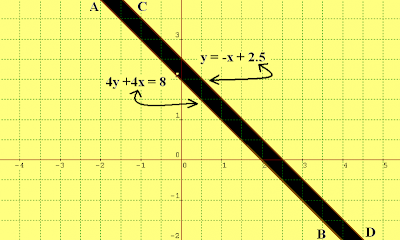Scientific Notations are standard way of writing number which are too small or too big.
In this standard notation all numbers are written in the form of:
m * 10n
here exponent n is an integer, m is mantissa which is a real number.
Scientific Notation Rules are as follows:
The value of mantissa holds a real number from 1 to 9 and exponent n contains the place value to get the original number.
If the decimal shifts to left by ‘n’, then the value of exponent increases by ‘n’. if decimal shifts to right the exponent decreases by 1 for each shift.
For addition or subtraction of numbers in scientific notations form their exponents should be same.
For multiplication of two such numbers, mantissa is multiplied and exponents are added.
For division exponents are subtracted.
Scientific Notation Problems are as follows:
Q.1) Write the following numbers in scientific notations form:
1) 56788
2) 67.345
3) -6890
4) 0.000009888
5) 978.0 * 10-5
Sol.1)
1) 56788 = 5.6788 * 104. As we know that the mantissa can be real number from one to 9 so we shifted decimal to left four times and hence the exponent of 10 increases by 4.
2) 67.345 = (67.345)*100, in this number, value of mantissa is greater than 1 hence we shift the decimal to left and increase exponent by 1. So its scientific notations form is: 6.7345 * 101
3) -6890 = (-6.890)*103 by using rule used in above solution.
4) 0.000009888 = (0.000009888)*100. This number is less than one hence we will shift the decimal to the write and decrease the decimal by 1 for each right shift.
(9.888)* 10(0-6) = 9.888*10-6.
5) 978.0 * 10-5 is in exponential form but not in standard scientific notations as mantissa is greater than 1. So, shift it to let two time and increase exponent by 2 to get 9.78 * 10-5+2 = 9.78*10-3
Q.2) Solve the following:
1) (7.0 x 102)+(9.4 x 106)
2) (9.4 x 104)(3.5 x 10 –5)
3) (3.5 x 10 – 2)/(9.6 x 10 – 4)
Sol.2)
1) As exponents are not same. 9.4x106 = 94000 x 102
(3.0 x 102)
+ (94000.0 x 102)
94003.0 x 102 = 9.4003 x 106
2) (9.4 x 104) (3.5 x 10 –5)=(9.4 x 3.5) x 10(4+(-5)) (exponents are added as multiplication operation)
= 32.9 x 10-1
= 3.29 x 100
3) (3.5 x 10 – 2) / (1.5 x 10 – 4)
= (3.5/1.5) x 10 (-2-(-4)) (exponents are subtracted as division operation)
= 2.33 x 102

